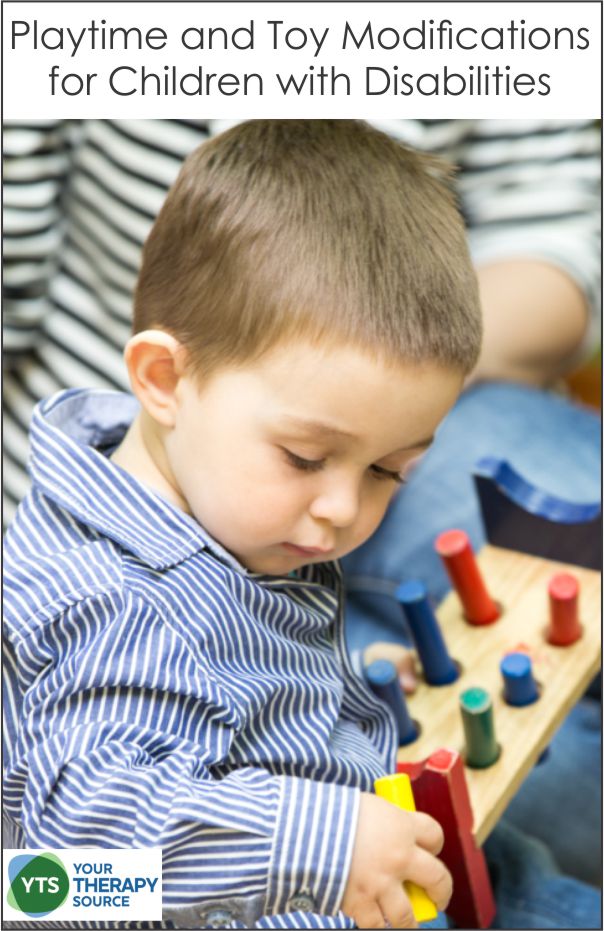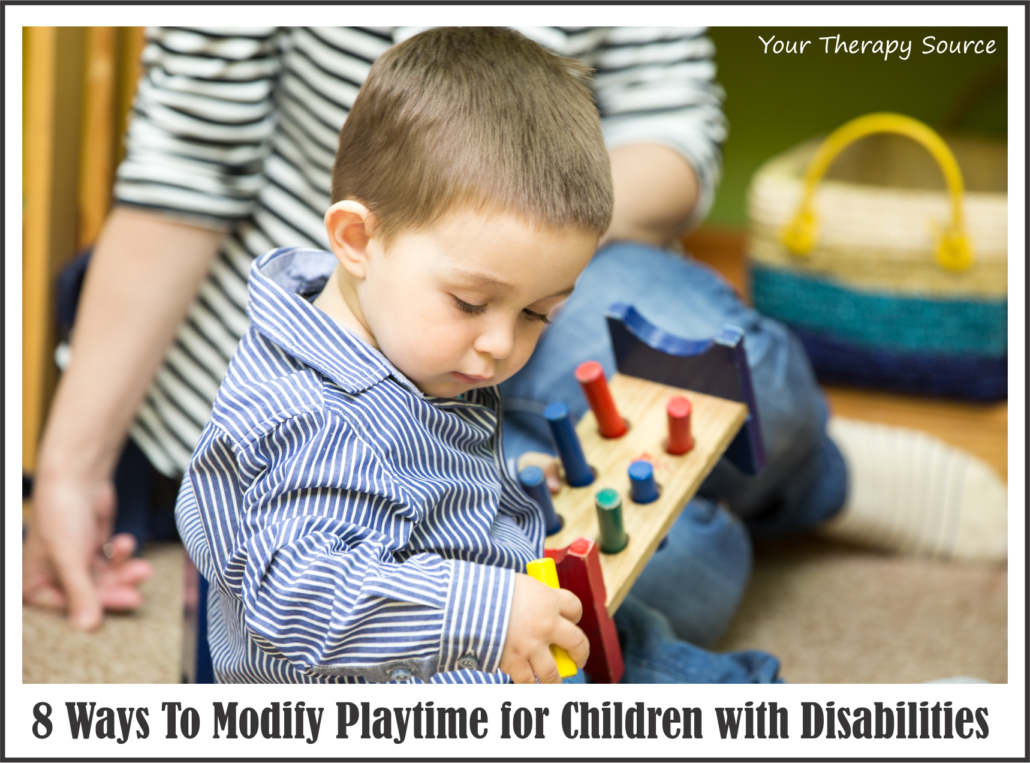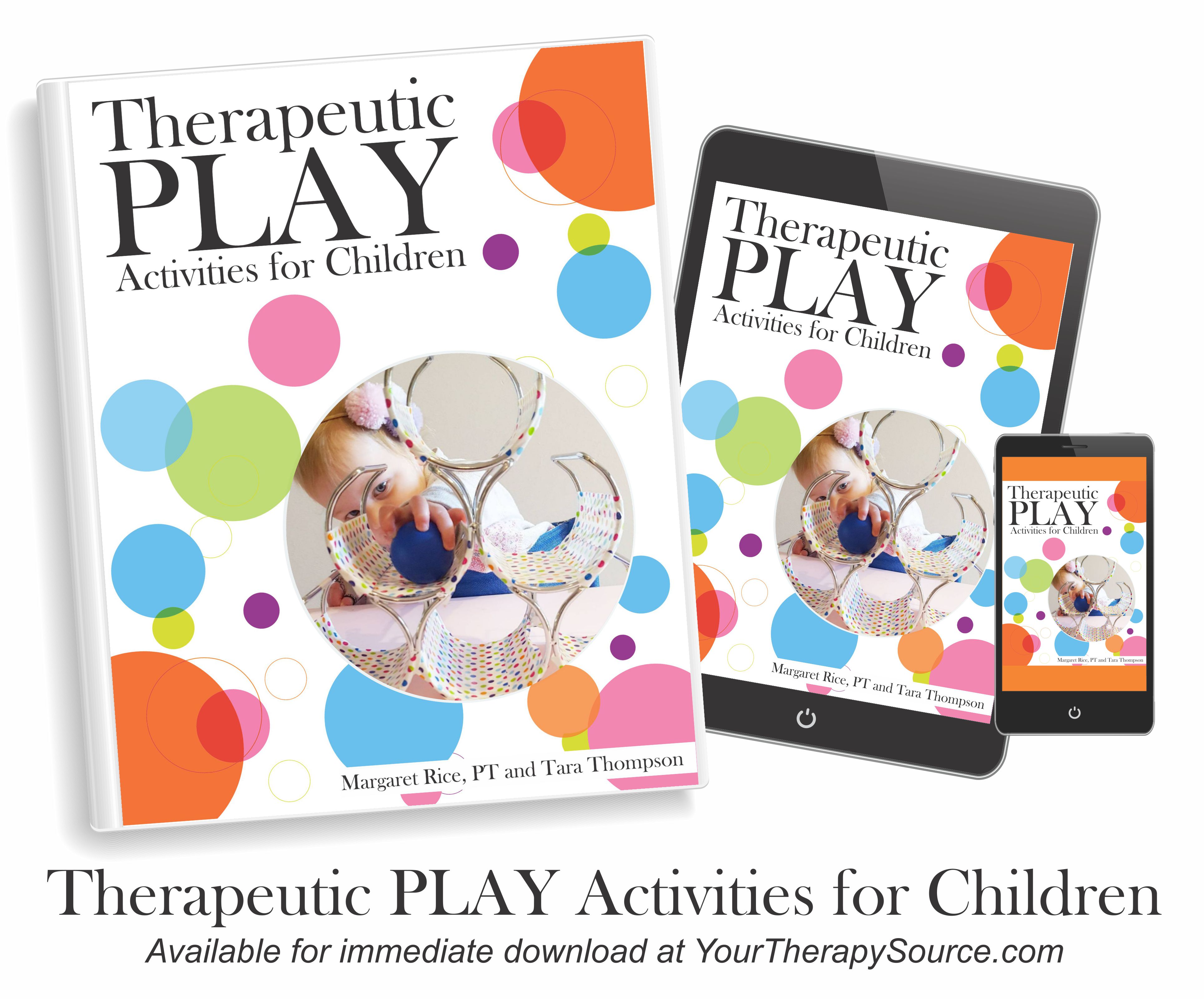8 Playtime and Toy Modifications for Children with Cerebral Palsy or Other Disabilities
Are you in search of toy modifications for children with cerebral palsy or other disabilities? Whether it be at home, daycare, school or extracurricular activities, children with disabilities may benefit from modifications during playtime.
The best way to think about the topic of children with cerebral palsy and toy modifications is to always remember that every child is different. Using a task analysis approach to each situation and child is beneficial. The following questions can help get your started.
8 Questions to Ask When Assessing a Child’s Needs During Playtime
When a child is struggling to play with a toy or a peer, ask yourself these 8 questions to see what changes can be made to help the child become more independent with play skills.
- Does the environment need to be modified? If the physical environment is adapted perhaps the child will be able to be more independent during playtime. For example, move toys down to lower shelves to allow the child to access the toy without asking for help.
- Do the modify the toy for children with cerebral palsy or other disabilities? For example, build up a handle on a toy so a child can grasp it independently or use a larger ball so a child can catch it.
- Do you need to make the activity easier? For example, change the rules of the game to shorten the length of time to play or simplify the steps of a game.
- Do you need to make the play time more motivating for the child? Perhaps the child is not engaging in play because he/she is not interested in the toy or activity. Try using what a child enjoys playing with in different situations to expand his/her repertoire of play.
- Do you need to provide adaptive equipment? For example, use a chair with more support to provide additional postural control so the child can use his/her arms and hands more efficiently.
- Do you need to provide prompts to encourage appropriate play? Try modeling the activity or providing occasional verbal prompts for suggested uses of the toys.
- Do you need to partner the child with a friend? Try teaming the child up with a friend to model play activities or turn taking to complete a game.
- Do you need to provide step by step visual directions? Try placing visual step by step photographs in the play area for reminders of suggested play activities.
Therapeutic Play Activities for Children digital download includes 100 play activity pages and 12 tip sheets. The play activities encourage the development of fine motor skills, bimanual skills, rolling, crawling, tall kneeling, standing balance and cruising with a strong focus on children with cerebral palsy.
Reference: Sandall, S. Play Modifications for Children with Disabilities. Young Children Journal. Retrieved from the web on 9/23/16 at http://journal.naeyc.org/btj/200305/playmodifications_sandall_1.pdf
Read more on Gross Motor Skills and the Development of Play here.





